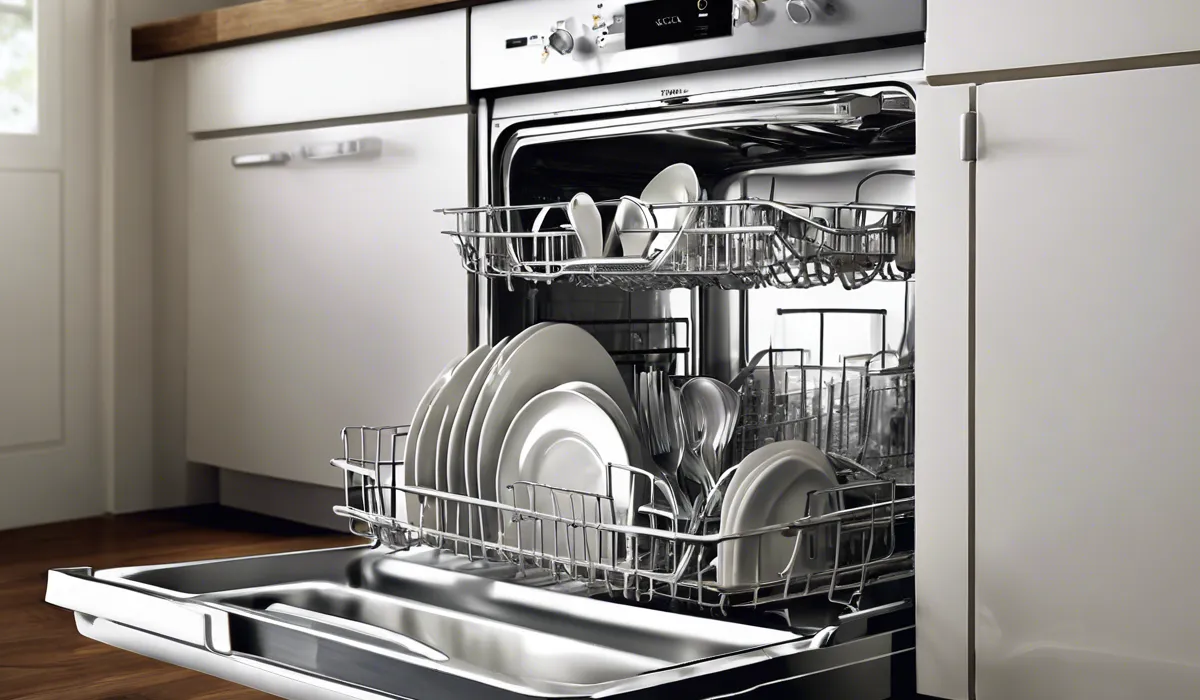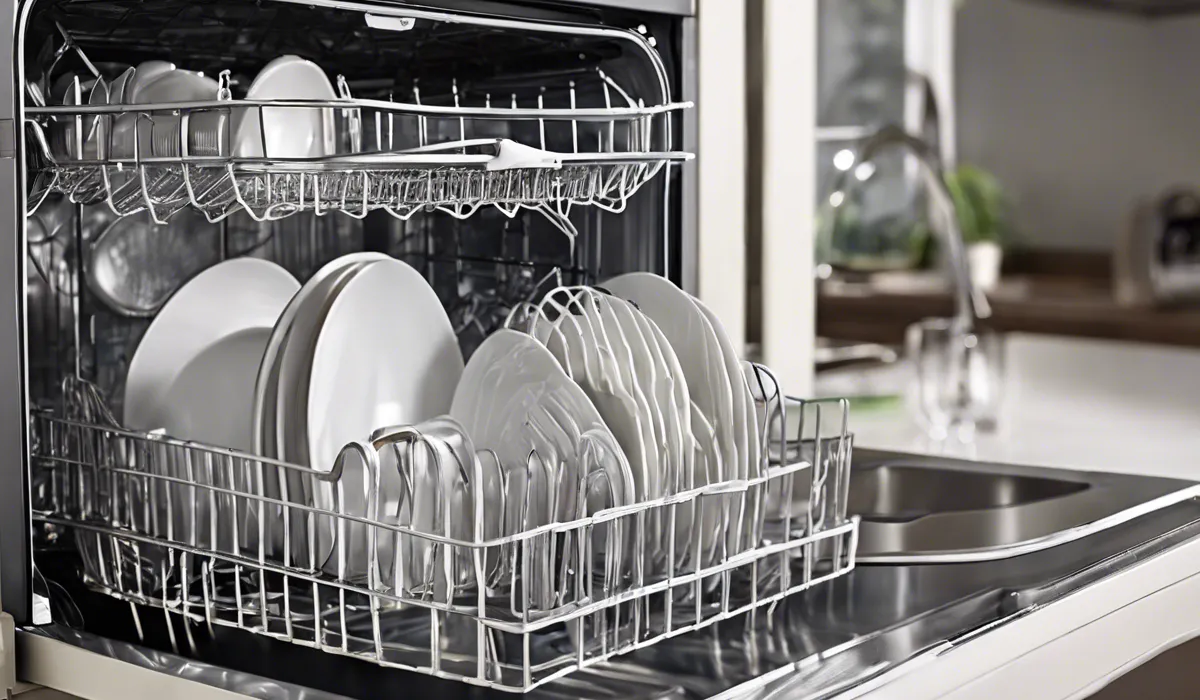Do Dishwasher Dry Dishes? Surprising Truths Revealed!
Yes, most dishwashers have a drying feature that uses heated air or a fan to dry dishes after washing. However, effectiveness varies by model, and some items may require manual drying to prevent spots or leftover moisture.
How Dishwashers Dry Dishes

Explanation of the Dishwasher Drying Process
When a dishwasher enters its drying phase, it effectively utilizes heat and air flow to remove moisture from clean dishes.
This phase is crucial because it not only ensures that dishes are ready for storage or immediate use but also helps prevent the growth of bacteria that thrive in moist environments.
The drying process typically starts after the final rinse cycle, where the dishes are left with only a small amount of water that needs to evaporate.
Different Drying Methods Used by Dishwashers
Dishwashers use several methods to achieve a dry load at the end of a wash cycle. Each method has its own mechanism and can influence the overall efficiency of the drying process.
Excess Heat from the Wash Cycle
Most dishwashers rely on the heat generated during the wash cycle to assist in the drying process.
The high temperature of the water not only cleans the dishes but also warms them up so that, once the rinse cycle is complete, the residual heat helps to evaporate the remaining water.
Heated Drying (Traditional Method)
The traditional method involves a heating element at the bottom of the dishwasher that heats the air inside, causing water on dishes to evaporate. While effective, this method can sometimes lead to higher energy usage.
Condensation Drying
Condensation drying takes advantage of the fact that hot air can hold more moisture than cool air. In this method, dishes are heated, and the dishwasher’s walls remain cool.
Moisture condenses on the cool walls rather than the dishes, resulting in drier items at the end of the cycle.
Fan-Assisted Drying
Some models come with a fan that helps circulate the hot air inside the dishwasher, speeding up the drying process and providing more uniform drying for all items.
Automatic Air Circulation Systems
Dishwashers with automatic air circulation systems use sensors to detect humidity levels and automatically adjust the fan speed, ensuring optimal drying for every load.
The Role of Rinse Aid in the Drying Process
Rinse aids are additives that reduce the surface tension of water, causing it to form thin sheets rather than droplets. This allows water to slide off dishes easily, enhancing the drying process.
Factors Affecting the Drying Efficiency
Several factors can impact how well a dishwasher dries your dishes. Understanding these can help you optimize the drying phase for better results.
Dishwasher Model and Age
Older dishwashers may not have the advanced features that newer models do, which can lead to less efficient drying. The age of the appliance can also mean that its components are not functioning as well as they once did.
Settings and Cycle Choices
Selecting the right settings and cycles is key to ensuring that dishes dry properly. Some dishwashers offer specific drying cycles designed to enhance performance.
Placement and Material of Dishes
How you load the dishwasher and the materials your dishes are made of can also affect drying. For instance, plastics tend to retain more moisture than glass or ceramic.
Local Water Hardness
Hard water can leave deposits on dishes that may not only hinder the drying process but also cause spotting and filming.
Advantages and Disadvantages of Dishwasher Drying

Advantages
Dishwasher drying offers several benefits over traditional hand drying, from saving time to potentially reducing your carbon footprint.
Convenience and Time-Saving
One of the biggest advantages of using a dishwasher to dry dishes is the convenience it offers. Once you start a cycle, you can walk away and return to dry dishes, saving you time and effort.
Reduction in Energy Usage Compared to Hand Drying
Using a dishwasher for drying can be more energy-efficient than hand drying, especially with newer, energy-star-rated models.
Less Physical Handling, Reducing the Risk of Breakage
Handling wet dishes can lead to accidents and breakages. Dishwashers minimize this risk by drying the dishes within the unit.
Disadvantages
Despite their benefits, there are some disadvantages to be aware of when using a dishwasher’s drying feature.
Potential for Plastic Items Not Drying Completely
Plastic items often do not dry as well as glass or ceramic in a dishwasher due to their lower thermal mass and different material properties.
Possible Increased Energy Consumption for Heat-Assisted Drying
Heat-assisted drying can consume more energy, which might be a concern for environmentally conscious users.
Maintenance Issues Such as Clogged Vents Affecting Drying Performance
Over time, dishwashers can experience maintenance issues like clogged vents, which can hinder the drying process and require attention.
Tips to Improve Dishwasher Drying Performance

Proper Loading Techniques
Ensuring that dishes are loaded correctly, with space between them for air to circulate, can significantly improve drying performance.
Using Rinse Aid and Its Alternatives
Utilizing rinse aid can help water slide off dishes more readily. If you prefer natural solutions, vinegar can sometimes be used as an alternative to aid in drying.
Selecting the Optimal Drying Cycle
Choosing the right drying cycle, if your dishwasher offers multiple options, can make a difference in the dryness of your dishes.
Regular Maintenance to Ensure Efficient Operation
Regularly cleaning and maintaining your dishwasher is important to keep it operating efficiently and ensure the best drying results.
Unloading Tips to Avoid Water Spots and Streaks
Unloading the bottom rack first can prevent water from top dishes from dripping onto dry ones below, helping to avoid water spots and streaks.
When to Consider Upgrading to a Newer Model with Advanced Drying Features
If your dishwasher is old and not drying efficiently, it might be time to consider upgrading to a newer model with advanced drying technology.
FAQs About Dishwasher Drying Capabilities
Do all dishwashers have a drying feature?
Yes, most dishwashers come equipped with a drying feature, but the type and effectiveness can vary between models.
How do dishwashers dry dishes?
Dishwashers typically dry dishes using heated air or a fan to circulate warm air around the dishes.
Are dishes completely dry after a dishwasher cycle?
While dishes generally come out dry, some models may leave spots or leftover moisture, and certain items may require manual drying.
Can I improve the drying performance of my dishwasher?
Yes, using rinse aids, selecting a higher heat setting, or opening the dishwasher after the cycle can improve drying performance.
Do some materials dry better than others in a dishwasher?
Yes, materials like glass and ceramic typically dry better than plastics, which may retain moisture due to their lower heat absorption.
Final Thoughts
Most dishwashers are equipped with a drying feature that utilizes heated air or a fan to dry the dishes post-wash. The efficiency of this feature can vary significantly across different models.
Users may still need to manually dry some items, especially if they are prone to water spots or retain moisture, to ensure a completely dry outcome.





